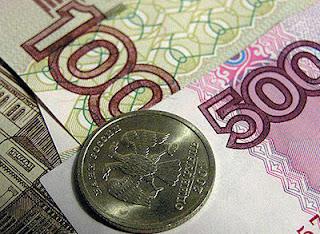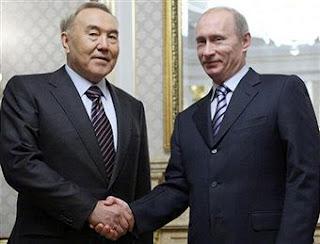 On October 3, 2011, Russian Prime Minister Vladimir Putin made headlines by putting forward the idea of a Eurasian Union including several post-Soviet states. Putin, who is the front runner in next year’s presidential elections, laid out his plans in an article in Izvestia newspaper for the creation of a supranational economic union based on the Customs Union of Belarus, Kazakhstan and Russia, a project of prime importance that would constitute a historic landmark for all countries in the post-Soviet space.
On October 3, 2011, Russian Prime Minister Vladimir Putin made headlines by putting forward the idea of a Eurasian Union including several post-Soviet states. Putin, who is the front runner in next year’s presidential elections, laid out his plans in an article in Izvestia newspaper for the creation of a supranational economic union based on the Customs Union of Belarus, Kazakhstan and Russia, a project of prime importance that would constitute a historic landmark for all countries in the post-Soviet space.
Expecting critics to say he is trying to restore the Soviet Union, the Russian leader says: “We are not talking about recreating the USSR in one form or another. It would be naive to try to restore or copy that which remains in the past, but close integration based on new values and a political and economic foundation is imperative,” further explaining that what he is proposing is “a model of powerful, supranational union, capable of becoming one of the poles of the modern world.”
The target model closest to the Eurasian Union would be the European Union, which would necessarily imply the eventual use of a single currency with a single issuing center, as well as the appropriate bureaucracy to govern the rules of the entire economic space. Kazakhstan’s Prime Minister Karim Masimov said the experience of the European Union has shown that no promises should be made that could not be met, and that the union should link regional economies step by careful step. “The question of a single currency is something that we should be discussing right now. This needs to be prepared well ahead of time in order to avoid misunderstandings,” the Kazakh official said.
In 2009 Kazakh President Nursultan Nazarbayev harshly criticized the US dollar and proposed the creation of a regional single currency for the countries of the Eurasian Economic Community (Belarus, Kazakhstan, Kyrgyzstan, Russia and Tajikistan). According to Nazarbayev, the “euras”, as the proposed currency would be called, would in fact help to protect member countries’ economies from the US dollar, which the Kazakh leader called “a nondemocratic, nonfree, and noncontrolled currency.”
His idea to create a new supra-national currency that will not be affected by the abrupt exchange rate changes on the international currency markets wasn’t new. During the Cold War, the Soviet Union and Eastern bloc countries used the so-called “convertible” ruble, under the Council for Mutual Economic Assistance. Essentially, Nazarbayev was therefore offering the same system: all countries keep their own national currencies, that are treated as symbols of statehood and independence, but for transactions between states they would use the “euras.” But what if Russian plans to turn their own issued ruble into the common currency of the Eurasian Union prevail on Nazarbayev’s proposals?
In recent years Putin, while focusing on economic integration, has pushed for former Soviet states to adopt the Russian ruble as a regional currency, which would provide Russia with real benefits. Nevertheless, if the Russian ruble, as the most used currency in terms of consumers, will become the common currency of the Eurasian Union envisaged by the former KGB agent, the privilege of coining money would actually give Moscow absolute control of the economies of Kazakhstan and Belarus as well.
NAZARBAYEV AND PUTIN: EURASIAN UNION'S LEADERS
 In this way Putin, while maintaining its commitment not to pursue the revival of the Soviet Union as a model of political union now anachronistic, would nevertheless succeed in restoring Moscow’s political control over much of its former empire. But most important of all, relying on the strength of an economy fueled by increasing oil and gas export revenues, then Russia may have more authority to push for a new monetary system that would officially turn the ruble into one of the world’s reserve currencies, at the expenses of the US dollar. The great struggle for control of Eurasia is fought even so.
In this way Putin, while maintaining its commitment not to pursue the revival of the Soviet Union as a model of political union now anachronistic, would nevertheless succeed in restoring Moscow’s political control over much of its former empire. But most important of all, relying on the strength of an economy fueled by increasing oil and gas export revenues, then Russia may have more authority to push for a new monetary system that would officially turn the ruble into one of the world’s reserve currencies, at the expenses of the US dollar. The great struggle for control of Eurasia is fought even so.

